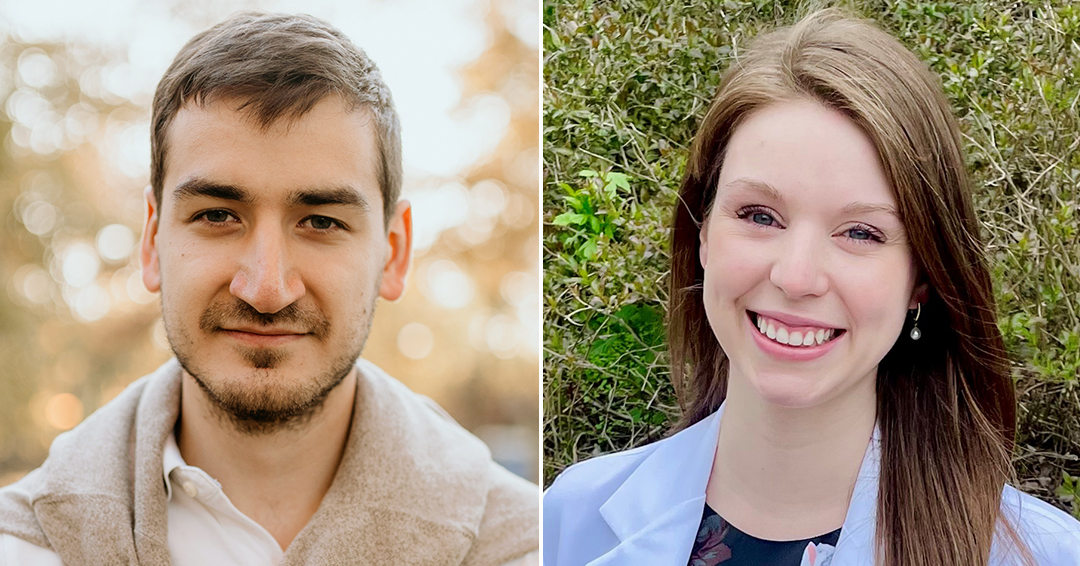
Two large collaborative projects led by researchers at McGill University and Université Laval have described the interactions between tumour and immune cells in samples from more than 600 patients with lung or brain cancer. Results of each study, which used a novel technology called ‘imaging mass cytometry’ (IMC), were recently published in ‘Nature’, one of the world’s most prominent scientific journals.
IMC works by first conjugating antibodies to heavy metals, which are then used to stain a tumour sample. A laser ablates every region of the tumour, releasing the heavy metals to allow the identification of the antibodies present in that region. With this technology, researchers can use up to 40 different antibodies simultaneously, a significant increase from what was previously possible, enabling the ability to gain information about cell identity and location.
Mark Sorin, a MD–PhD candidate at McGill University’s Rosalind and Morris Goodman Cancer Institute (GCI), was one of the co-first authors on the lung cancer paper together with Elham Karimi and Morteza Rezanejad. “We used IMC to describe the tumour immune microenvironment, the relationships and interactions between various immune cells and cancer cells, and we paired this technology with artificial intelligence to make meaningful clinical predictions,” notes Mark. “Our main question was, can we predict which early-stage lung cancer patients will have a progression of their disease after surgery.” This work was completed under the supervision of Professors Daniela Quail, PhD, and Logan Walsh, PhD, from the GCI and Philippe Joubert, MD, PhD, from Université Laval.
The main treatment today for early-stage lung cancer is surgery. However, between 30 to 40 percent of patients will have a recurrence of the cancer after surgery. The challenge in this study was to try to identify who these patients are.
“The idea is that if we could predict which patients will have a recurrence, we could give these patients chemotherapy to cure them, and for the patients that won’t have a recurrence we can spare them the toxicity of chemotherapy,” explains Mark. “This is the big novelty and the big impact of our work. It is the first application of IMC together with artificial intelligence to make predictions regarding clinical outcomes.”
The brain cancer paper was co-led by another MD–PhD candidate at the GCI, Sarah Maritan, together with Elham Karimi, Miranda Yu and Lucas Perus. This work was completed under the supervision of GCI Professors Quail, Walsh and Peter Siegel, PhD. “With the introduction of IMC, which allows you to look at many different cell types all at once in a single tissue sample, we jumped at the opportunity to profile immune cells that are involved in different types of brain tumours,” says Sarah.
Brain cancer researchers previously thought that brain cancers grow in an immune-privileged environment with minimal immune cells capable of limiting cancer cell growth. However, according to Maritan, there is growing evidence that this is not the case and that immune cells can directly interact with cancer cells in the brain and play a vital role in regulating cancer growth. The researchers’ work sought to compare the immune-cancer interactions in metastatic brain tumours, tumours that start in other parts of the body, with glioblastoma, a primary brain tumour that arises in the brain itself.
“At the Goodman Cancer Institute with Professor Daniela Quail’s group having expertise in primary brain tumours, and my work with Professor Peter Siegel focusing on metastatic brain tumours, we thought it would be a very unique opportunity to combine these two data sets,” explains Sarah. “In addition, Professor Logan Walsh’s expertise in computational approaches allowed us to assess the positional architecture of immune cells in these different types of brain tumours.”
For glioblastoma, the outcomes are poor, with patients often dying less than a year after diagnosis. The results of the study showed that different types of glioblastomas are not necessarily equal in terms of survival outcomes. “Our main takeaway was this identification of a novel immune cell, what we call MPO positive macrophages, and we found that tumours that have high levels of this special MPO cell type have longer survival. So, we’re in the process now of diving into what exactly these cells are, how they behave and how they regulate cancer growth,” adds Sarah.
Researchers are in the process of trying to figure out how they can harness these MPO macrophages to develop new treatment options, or new prognostic biomarkers to determine which patients will have better outcomes.
Next, the research group plans on using these tools with new data sets and samples to answer clinically relevant questions. The researchers say the response to the papers published in Nature has been enthusiastic in terms of future collaborations. Scientists and clinicians are now looking to either add samples to their data sets, or to get access to the data sets so they can ask their own clinical questions.
Sarah and Mark attribute their success to the quality of the training and mentorship received through the MD–PhD program at McGill and highlight the importance of continued funding. “These studies are a testament to the importance of clinician-scientists at McGill and beyond and the prospect that this type of work can have towards ultimately improving outcomes for patients,” says Mark.
